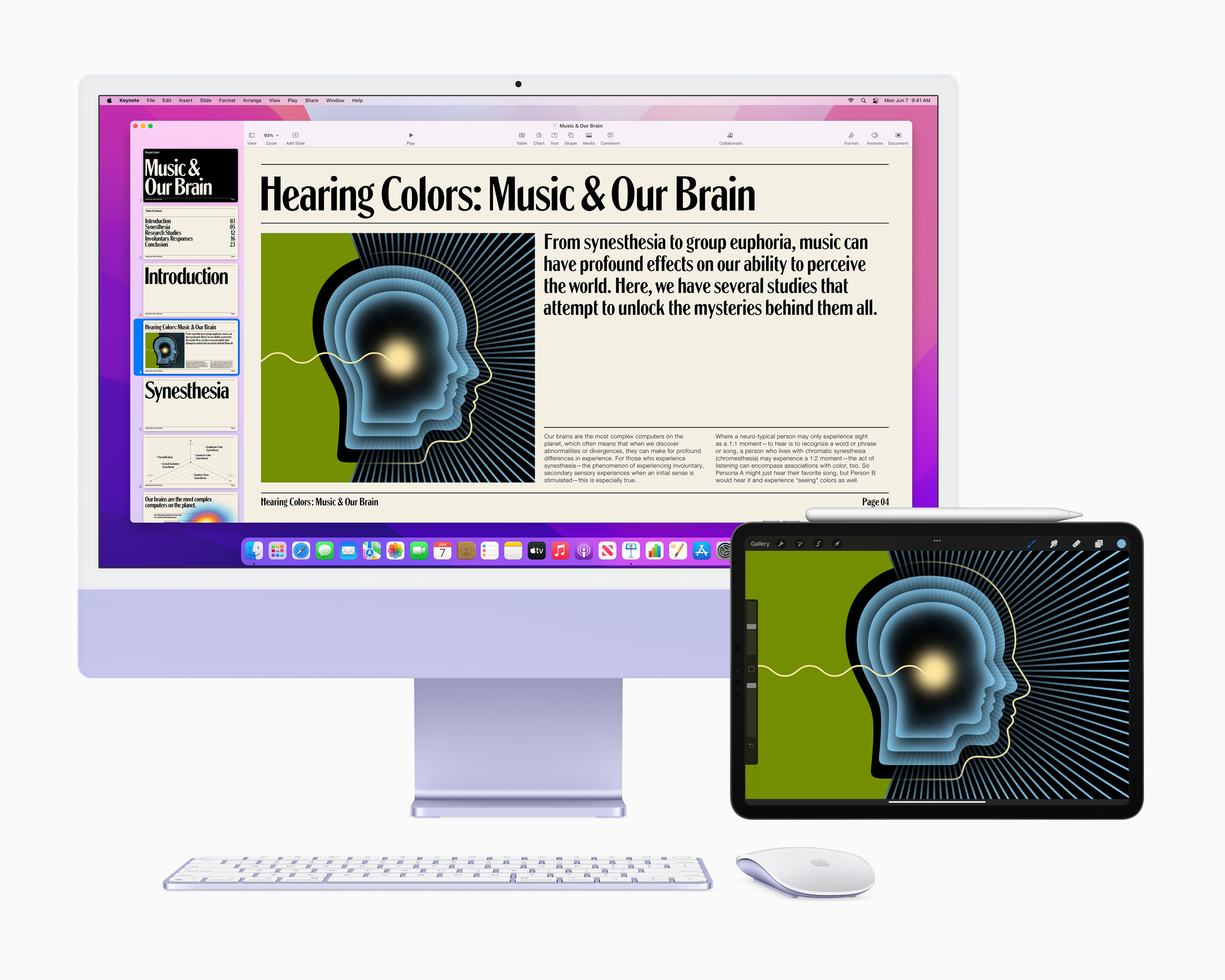
Allow me to explain, it’s better than it sounds…
Among the avalanche of new features and upgrades to iOS, iPadOS and most of all macOS 12 Monterey, there were two that were like a dream come true for anyone who has used AirPlay with AppleTv or “SideCar”, which originally came to the mac with macOS Catalina, and wished for one bold step further.
In an office environment, like our newsroom, being able to beam an iPad or mac on to a large conference style TV is great, but springing for the $ it takes to get a high resolution computer monitor large enough for group viewing is not such a great treat.
A fantastic compromise, one that many have wished for but never seen is the new option cogently called “AirPlay to Mac” which, just as the name implies, allows you to bean your phone or iPad (or I presume one mac to another) for paired or group viewing. (there were times when I, for one, forgot that this feature did not yet exist and tried to connect a mac screen using airPlay, to no avail).
Even with tiny bugs that might arise at first when trying to get multiple macs to act as screens for a single source, once this is mature it should revolutionize meeting of small groups of colleagues all armed with trusty macs but wanting to do a group think and discussion session. (At a digital publisher meeting, like at Lynxotic, we might be looking at analytics data for the past week and all want to see the same data across all screens, for example.
Oh, and did I forget to mention that sound, just as in “regular” AirPlay, is included in the bargain. So even if it’s audio only that you want to share (like force feeding colleagues your favorite song) that is going to sound great on built in iMac speakers etc.
This seems instantly like something that is so obvious and intuitive that it could be one of those things, like AirPlay itself, that once entrenched and bug free, would be hard to live without.
Apple’s marketing copy:
“With AirPlay to Mac, users can play, present, and share just about anything — from the latest movies and games to vacation photos and presentations — from their iPhone or iPad right to their Mac’s stunning Retina display. The Mac’s high-fidelity sound system can also be used as an AirPlay speaker, so users can play music or podcasts on their Mac, or use their Mac as a secondary speaker for multi-room audio.”
Universal control, which sounds somehow ominous is, hopefully, just a simple way to more easily migrate live from device to device (of the same owner)
Though the mechanics of this feature were not explained in detail at the Keynote for WWDC2021, this is another feature that seems mind-bendingly obvious as a boon for any Apple device power user, it also seems strange that it did’t exist all along.
As shown with one example in the video below, it involves having a single mouse or trackpad control multiple devices. Or the same set up for a keyboard, or both. While there are some unanswered questions – such as would the keyboard designated as being the one to “universally control” another device automatically turn off the control on the remote devices native keyboard?
Perhaps this is a naive question since it appears that it is presumed that any device being universally controlled is owned and being used by a single human.
In one way this seems to have the best use when using, say, an iPad pro for a drawing task and then moving across to the mac to process the drawing in photoshop, illustrator etc. Honestly, sometimes it’s interesting to see each device as connected to a “chair mode” – iPad for a chaise lounge, iMac or MacMini for an office chair, iPhone or iPad mini for freedom from any chair, and switching from the more human-centric modes (chaise lounge) to get down to serious business on the biggest baddest screen and most powerful CPU seems like a utopian dream, with this feature activated and working without a glitch.
The ways this could be integrated into a workflow, and the permutations of how this could be useful, seem infinite, assuming it operates anywhere near as seamlessly as in the demonstration by Craig Federighi in the video. Being able to drag and drop, as he did, across three (3!) separate devices at will is pretty incredible, if not only for its simplicity and elegance.
As per Apple: “Universal Control lets users work more seamlessly across their Mac and iPad. Working across Apple devices is now better than ever with new Continuity features:
Universal Control lets users work with a single mouse and keyboard and move between Mac and iPad for a seamless experience, with no setup required. Users can even drag and drop content back and forth between devices — great for sketching a drawing with Apple Pencil on iPad and placing it into a Keynote slide on the Mac.
Recent related article links:
- Apple Reveals new MacBook Pro Models, Mac Mini: all with M2 and M2 Pro Chips
- Fitness with Apple Watch: A Day in the Life of Highly Motivated Ring Closers
- The Vision of Steve Jobs for the Future of Apple has Barely Begun to Emerge
- Best thing about the new Mac Studio Display? It’s Optional with the Mac Studio Desktop…
- iPhone Subscription Service Could Launch This Year according to Gurman
Find books on Music, Movies & Entertainment and many other topics at our sister site: Cherrybooks on Bookshop.org
Enjoy Lynxotic at Apple News on your iPhone, iPad or Mac.
Lynxotic may receive a small commission based on any purchases made by following links from this page